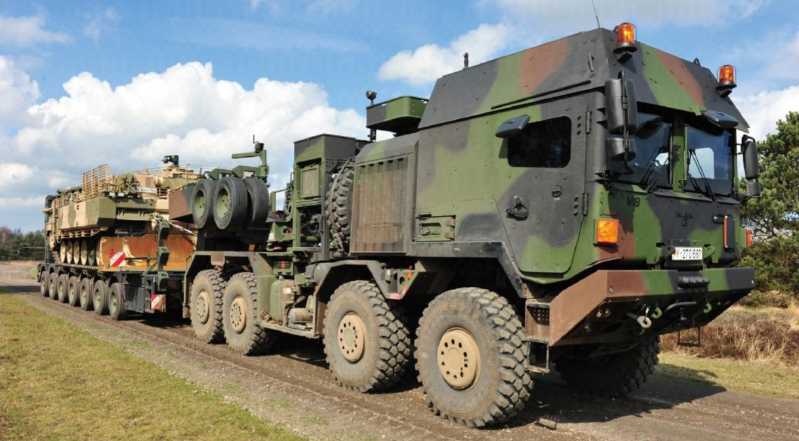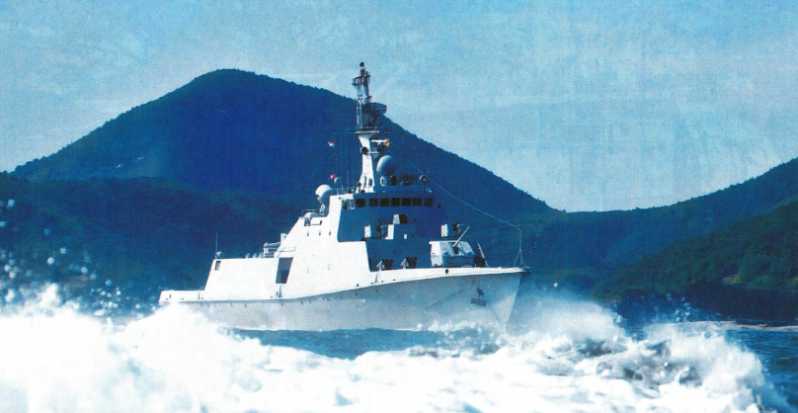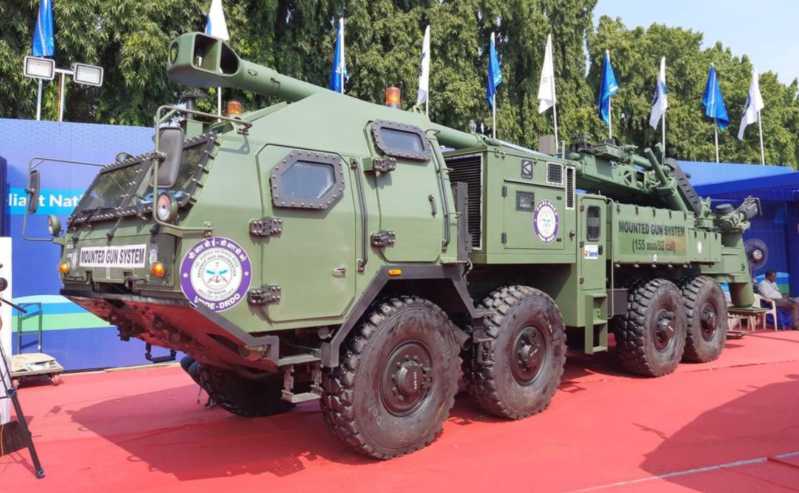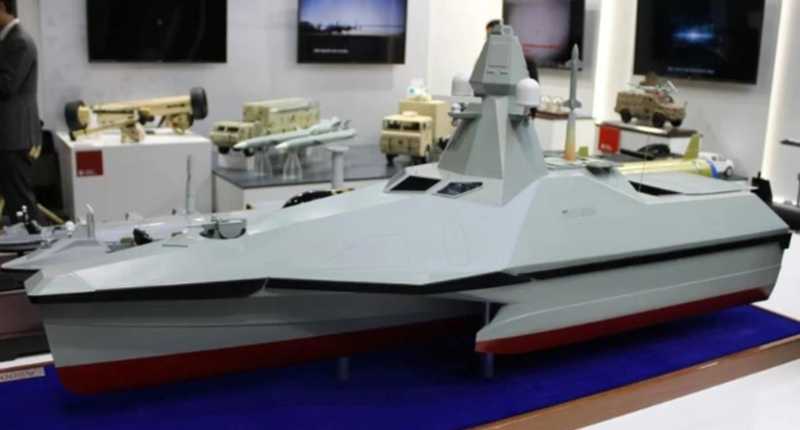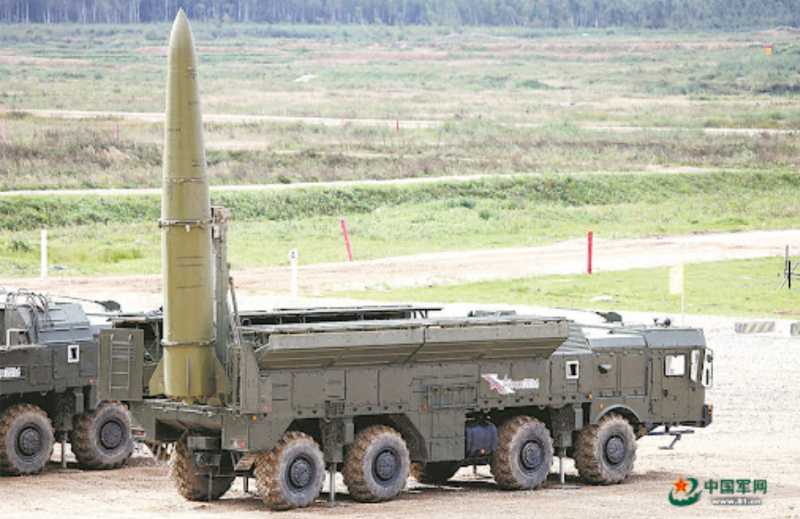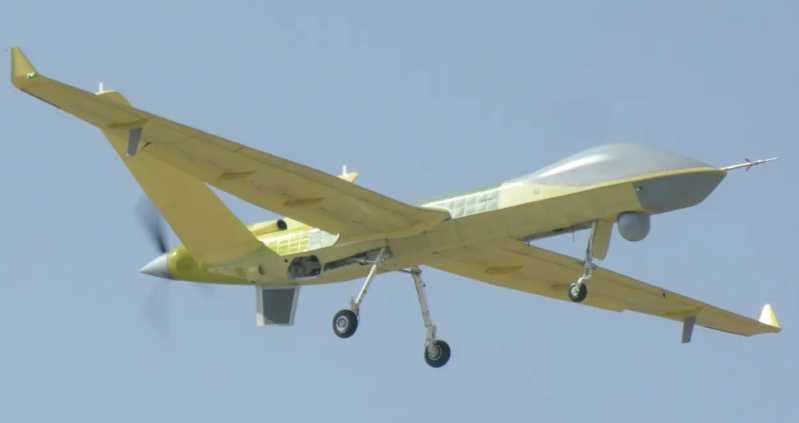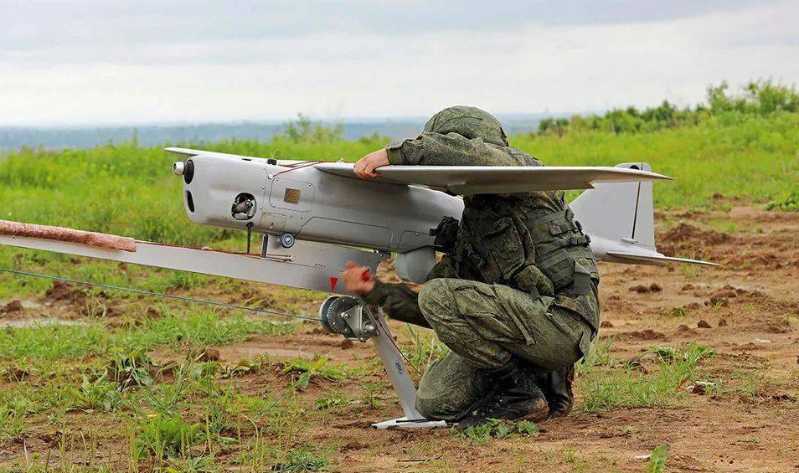Like almost any truck used by any military, there are many types/configurations of Heavy Equipment Transporters (HET). Essentially, these vehicles can be said to start as a commercial tractor with a rifle mounted on a gun rack for the driver, painted green or brown, and then progress to a purpose-built fully tactical tractor. Of course, the same diversity of options also applies to the very important but often overlooked semi-trailer.
HET selection is influenced by many factors
HET selection is often influenced by many factors, especially budget, as the purchase price of a basic green and brown commercial HET is less than half of the purpose-built fully tactical alternative. Although fully tactical HETs are more expensive to purchase, they have a longer service life, may be designed with future refurbishment/refit in mind, and are certainly more suitable for military deployment or combat operations.
The pressure to comply with various aspects of commercial transportation regulations can also have a considerable impact on the choice of HET type, especially for armed forces within NATO and even more so within the European Union. Obviously the more tactical and military specific any design is, the less likely it is to fully comply with current/upcoming commercial transport regulations.
It must be acknowledged that a regulatory designed HET will almost certainly be more user friendly in peacetime day to day operations when compared to a “fully tactical” designed HET. However, in a military deployment or conflict situation, a fully tactical HET will be more applicable.
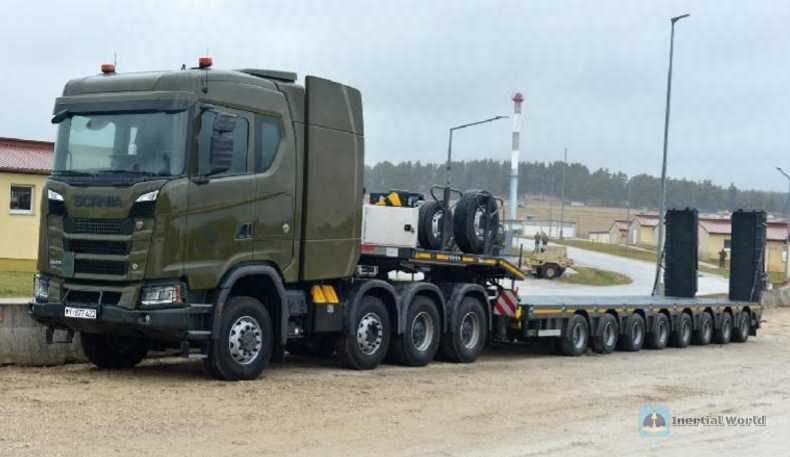
Problems with commercial transport regulations can start with seemingly simple things like vehicle lighting, or the location of the repair/towing, including factors such as the overall height of the tractor and even the turning radius. In the case of the latter, even a four-axle tractor with “normal size” commercial tires can meet these requirements relatively easily, but for a tractor of comparable size (comparatively including overall width and wheelbase) with larger 16.00R20 off-road tires, the problem can be very real. Most importantly, emissions compliance is often the subject of heated debate. Whatever the statement, the fact remains that no current EU/EPA compliant engine will operate continuously for long periods of time on low-grade/high sulfur fuels without some sort of restriction. A simpler engine that still meets Eurasian emissions standards is undoubtedly a more practical choice. Similar compliance issues arise with semitrailers. In the past, the HET semitrailer was little more than a wooden flatbed with leaf spring suspension mounted on an I-beam frame, but now the HET semitrailer has become a highly complex accessory that costs almost as much as the tractor it is attached to.

The difference in specifications between a semitrailer capable of transporting a main battle tank and fully compliant with commercial transport regulations and an ideal tactical semitrailer is even greater than that of the tractor. According to the laws of physics, in order to achieve its all-terrain stability, the ideal HET semitrailer should have a load bed that is as wide as the MBT payload it is carrying. For example, the overall width of the Leopard 2A6 MBT is 3.75 meters. The number of axles on the semitrailer should be the minimum required to meet the required ground pressure (usually 5, occasionally 6), and the tires should be similar to the wider 24R21 off-road tires.
If one is to identify HET procurement trends, any procurement trends for semitrailers are far clearer than those for tractors. For relatively trouble-free peacetime use, NATO/EU users almost without exception choose regulatory-compliant semitrailers (an option that is as technically capable and high-performance as possible). The width or track width of a non-extended semi-trailer is typically 3 meters, and while some semi-trailers are occasionally wider, to meet height restrictions, axle loads, and turning requirements, most now opt for up to 8 swing-out suspension axles (many of which are for steering), with up to 64 bias-ply tires (up to 8 per axle), which are about two-thirds the diameter of an off-road tire such as a 2R21.
As mentioned earlier, it is still possible for the military to procure a fully tactical tractor that is largely compliant with regulations. A large wide-body 1600R20 off-road tire, military cab, wading depth, cold weather protection, full compliance with electromagnetic compatibility (EMC) standards, and other military requirements can be designed to a large extent based on current regulations. However, this is becoming increasingly difficult as commercial transportation regulations require more and more driver assistance and safety systems to be standard. Frankly, these can become life-threatening tactical liabilities if left unchecked during deployed combat operations.
Procurement trends for tractors do not seem to be as consistent as for semi-trailers, and while compliance with EU standards is an ever-present procurement issue in most cases in Europe, user choices still vary widely, such as in Norway and Sweden. The perfect scenario for HETs would of course be for an armed force to have two fleets: one that fully complies with all regulations in peacetime and can travel on public roads and even pre-paved roads, and a second tactical fleet that prioritizes capability over all else, including compliance with relevant regulations. Unfortunately, in this day and age, this perfect scenario is simply not affordable. In fact, it would probably never have happened even during the Cold War, when most military procurement tended to prioritize capability over compliance with regulations. As mentioned earlier, procurement today tends to favor compliance over full tactical HETs. Truly purpose-built HETs are now rare.
Real military heavy equipment transporter
A glance at the inventory using Europe/NATO as a test subject shows that no two users currently operate the same HET; and while there is inevitably some commonality in tractor brand (if not exact model), there are even more types of semi-trailers. Traditionally, HET tractors have been favoured by their manufacturers (usually the prime contractors to whom the HET contract is awarded), however, as payloads, size and weight continue to increase, it has become increasingly difficult to design and manufacture semi-trailers that meet any degree of regulation while maintaining a viable load-carrying capacity on any smooth gravel surface. Such capabilities are now considered to be beyond the capabilities of many traditional suppliers of HET semi-trailers. Furthermore, as semi-trailers often outlast innovatively designed tractors through simple design, increasing payload size and weight also becomes an issue for users who wish to retain, refurbish/convert and re-use existing semi-trailers with new tractor models.
Many armed forces within Europe/NATO are currently or will be in the near future looking to replace their existing heavy equipment transporters based on age. For those who have yet to decide, the clear “leader” is the HX81 tractor from Rheinmetall MAN Military Vehicles (RMMV), and for those who require a certain level of regulatory compliance and tactical capability, it is likely the semi-trailer from Do11.
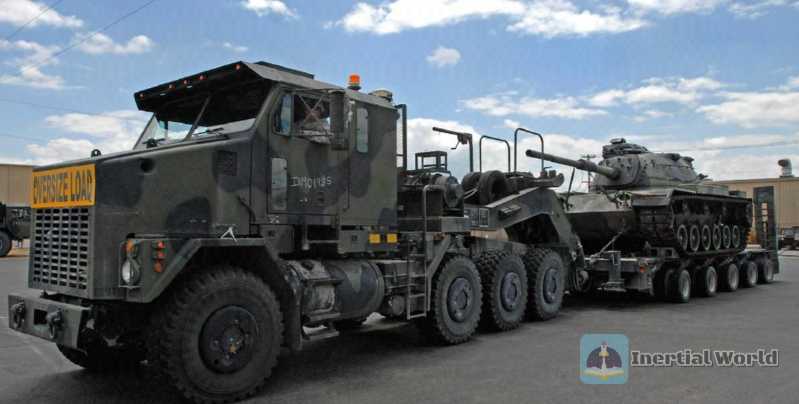
Before taking a closer look at the recent success and potential future opportunities for the HX81 tractor, a quick look at its competitors is in order. The following analysis will not include semi-trailers, only tractors, and will be a non-technical, scope-specific assessment.
In fact, all of the “big seven” European commercial truck manufacturers offer commercial heavy transporters that can easily transport payloads comparable to the heaviest main battle tanks. However, not all of these manufacturers offer true military HETs directly.
Germany’s Daimler and Sweden’s Scania and Volvo all offer HETs based on commercial models with varying degrees of militarization, including armored cabs. Daimler offers two distinct models: the Arocs, with the cab above the engine, or the Zetros, with the engine in front; Renault Trucks Defense offers a lightly militarized HET based on a commercial model directly, although a more militarized HET may be offered by or developed in partnership with France’s Arquus (formerly Renault Trucks Defense); and IVECO Defense Vehicles (IDV), part of Italy’s IVECO Group, offers various variants of its new Modular Military Series (MMR) HETs, with commercial or military cabs. Technically, if there is a need for a "green" truck, Iveco Defence Vehicles can offer Iveco commercial vehicles of appropriate specifications. In fact, Renault Trucks Defence has been acquired by the Volvo Group, while Scania and Rheinmetall MAN Military Vehicles, as well as Volkswagen, are part of the TRATON Group.

DAF (the acquired Dutch automaker) under the Paccar Group of the United States does not technically offer all-wheel drive or military vehicles. However, it should be noted that the Belgian Armed Forces are currently receiving a batch of "Phoenix" trucks produced by Czech truck manufacturer Tatra with the DAF logo (including a small number of heavy equipment transporters); this vehicle is a heavy truck with a DAF-designed cab and a Paccar Group engine. In addition, Tatra can also choose to provide users with the T815-7 heavy-duty military truck, which adopts the unique tubular skeleton chassis and swing-axle suspension design of the "Phoenix" series trucks.
In fact, the above trucks are most likely to become competitors of the HX81 tractor, and the competition between relevant European countries may be the most intense. As far as the "big seven" commercial truck manufacturers are concerned, the TGS series of heavy-duty commercial trucks of MAN Truck & Bus AG (MAN) has not been overlooked in terms of technology. RMMV is a joint venture between Rheinmetall and MAN (51%:49%), and this entity is responsible for the global military sales of MAN trucks. Therefore, as part of the TG series of military trucks, if any user needs a more commercial solution than the HX81 tractor, RMMV can provide the TGS series of heavy-duty commercial trucks.
As a potential competitor of RMMV in the limited market of Europe, the Finnish professional manufacturer Sisu cannot be ignored. Sisu offers the Polar series of trucks, which, although the chassis are custom designed, use a Daimler (Mercedes-Benz) frame and cab. While the series does not currently include heavy equipment transporters, it is not beyond Sisu’s design and production capabilities. Finally, Turkey’s BMC offers heavy equipment transporters based on the latest Tugra commercial series trucks.
Outside Europe, there are numerous heavy truck manufacturers, but not all of them have any real interest in the military market, especially more specialized models such as HETs, and other heavy truck manufacturers in countries such as Belarus, China, Iran or Russia have little real connection to the European military truck market.

However, Belarus has its own Minsk Wheeled Tractor Plant (MZKT) and Minsk Automobile Plant (MAZ). Among them, the Minsk Wheeled Tractor Plant is a former supplier of multi-axle transport-erector-launchers (TEL), heavy equipment transporters and similar vehicles for Russia and many Warsaw Pact armed forces. China has numerous heavy truck manufacturers, most of which are capable of producing various types of heavy equipment transporters. Currently, the PLA appears to be procuring two roughly similar military HETs (i.e., the TA4360 and TA4410) from Taian Aerospace Special Vehicle Co., Ltd. (TASV) Iran appears to be receiving HETs based on Volvo Group product designs (actual procurement/production details are unknown). With Belarus’ independence in August 1991, Russia has effectively lost the Minsk Wheeled Tractor Plant, and currently relies primarily on the Bryansk Automobile Plant (BAZ) and Kamaz to fill a very large niche in specialized vehicles. Over the past decade, Russia’s choice has been the Kamaz-65225 HET, which was developed based on the commercial Kamaz-6522 transporter. For unknown reasons (either due to the inability of Russian industry to develop a viable replacement for the older MAZ-537 HET, or purely economic reasons), the Kamaz-65225 HET has 6x6 all-wheel drive rather than 8x8, and is equipped with dual rear wheels/tires rather than the wide-body single rear wheel/tires configuration of the MAZ-537 HET. The standard semitrailer produced by the Kamaz automaker, as well as all the heavy equipment transporters mentioned in this paragraph, while not equipped with wide-track all-terrain tires, has significantly larger wheel and tire diameters than their Western counterparts. Perhaps most notably, all of its loading platforms are full-width (the width of the payload) and do not rely on platform length to limit stability, which is a specific requirement of EU countries to comply with road use regulations.
Returning to the question of the possibility of competition for the HX81 tractor worldwide, the most obvious one would be the M1070A1 heavy tractor (Oshkosh product) currently selected by the US Army. In order to meet the regulatory requirements of European roads, the M1070A1 has been modified and named the M1300 heavy tractor, which is used in conjunction with the M1302 semitrailer provided by Broshuis that meets the relevant European road regulations. The United States’ ongoing Universal Tactical Truck project may provide its Army with a tractor option for heavy equipment transporters, but it is believed that the procurement of M1070A1/M1300 heavy tractors is likely to continue in the near and medium term of the project. Since the introduction of the "A0" configuration, Oshkosh has been actively marketing the M1070A0 heavy tractor worldwide; although the UK is the only European operator of its derivative model, it is known that the M1070A0 heavy tractor has always performed well.
Likewise, Mack Trucks and Navistar Defense (part of the TRATON Group) from the United States have potential options. In recent years, Mack Trucks, a subsidiary of the Volvo Group, has been active in the defense equipment field again, so it should be relatively easy to develop a military heavy equipment transporter based on its "Granite" commercial platform. As an independent manufacturer, 70% of the shares are held by Cerberus Capital Management (also known as Bolong Asset Management Co., Ltd.), and Navistar Defense, which holds 30% of the shares, also has its own options. It has produced heavy equipment transporters earlier, and the most recent known customer is Israel; at present, the company has significantly adjusted its business model and added the option of non-standard commercial off-the-shelf heavy/heavy equipment transporters to the specifications.
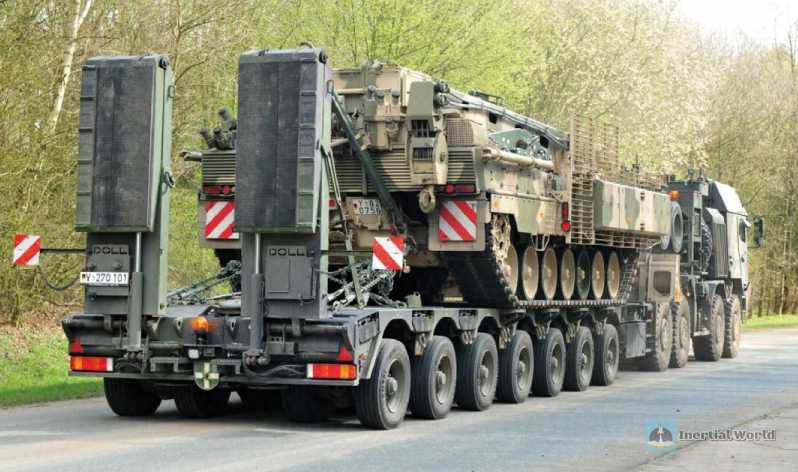
Market leader
To date, the HX81 tractor is virtually the market leader in the European and European access markets for known current users or customers. Moreover, as mentioned previously, the HX81 tractor is likely to be a strong competitor for current/future heavy equipment transport requirements in these markets.
HX81 tractor current users or customers include Australia, Austria, Germany, Norway, Saudi Arabia, Ukraine and the United Arab Emirates. In July 2013, Australia ordered approximately 110 HX81 tractors as part of Phase 3B of the wider Land 121 project, 21 of which were equipped with Rheinmetall’s armored cabs and the rest with the standard cab of the HX series military trucks. The semi-trailer is provided by Australia’s own Haulmark Tractor Company, a very special design configuration designed to meet Australia’s strict axle weight requirements (also known as axle load, which refers to the maximum vehicle weight allowed to be distributed to each axle).
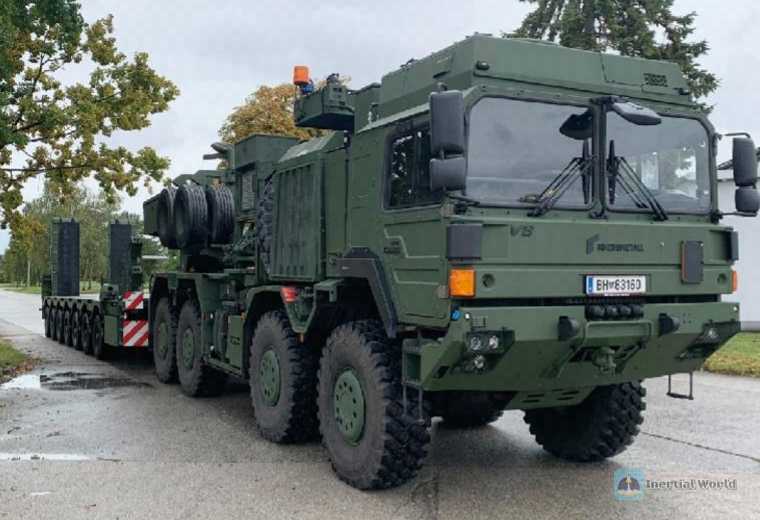
Austria initially ordered four HX81 tractors as part of a framework contract for up to 1,375 trucks awarded to RMMV in 2023. Austria later ordered 15 more (with armored cabs and Do11’s eight-axle semi-trailers)
When the delivery mission is completed this year, Germany will receive a total of 158 HX81 heavy equipment transporters. The initial 21 (including two test vehicles) were equipped with an armored cab developed by Krauss-Maffei Wegmann (KMW), while the remaining 137 HX81 HETs were equipped with standard HX series military truck unarmored cabs and some other limited configuration differences from the initial 21 delivered.
As of early 2024, the Norwegian HX81 tractor is in production. Both Norway and Sweden are procuring RMMV-developed trucks under a joint procurement program led by the Norwegian Defense Logistics Organization (NDLO). While highlighting the lack of commonality of the HETs procured earlier, this fact is further strengthened when it is noted that even under the joint procurement program, Norway would have likely purchased HX81 tractors for its HETs, but Sweden chose the less tactical TG series military trucks.
In 2016, Saudi Arabia awarded Rheinmetall a contract for 110 HX81 tractors plus semi-trailers. Due to export license issues, it is believed that the company will only deliver 20 tractors and all semi-trailers. After possible sales to Jordan and Romania, in 2023, it was revealed that the remaining 90 HX81 tractors, as well as three-axle full-width tactical semi-trailers (produced by Do1) will be provided by Germany to Ukraine. It is understood that the initial supply was a five-axle full-width semi-trailer developed by the French company Nicolas, which was equipped with 24R21 wide-body tires and an axle driven by an auxiliary power unit (APU) for increased off-road traction.
It is reported that the first export user of the HX81 tractor was the UAE. Between 2011 and 2014, 32 (in two batches/4+28) HX81 tractors and 28 five-axle full-width semi-trailers developed and produced by the German company Crossmobi were delivered. Most of the HX81 tractors are equipped with an extended modular military cab developed by RMMV, and the rear two drive axles that match the semi-trailer are equipped with 24R21 wide-body tires (replacing the original standard 16.00R20 tires).
Looking to the future, the demand for heavy equipment transporters in three European countries, France, the United Kingdom and the Netherlands, has not yet been determined. France does need to replace the nearly 30-year-old TRM 700-100 heavy equipment transporter specially designed by Renault Trucks Defense, and although the fleet has recently been supplemented by the less powerful E-Tech480 heavy equipment transporter (developed by Finland’s Sisu), the need for replacement still exists. The recent winners in the French truck market are Renault Trucks Defense/Arquus and Sweden’s Scania, which also has a truck manufacturing plant in France. If France wants a true tactical heavy equipment transporter, neither Scania nor Renault Trucks Defense has a product that can compete with the HX81 tractor.
In the case of the UK, the current Oshkosh 1070F heavy equipment transporter was procured under the Private Finance Initiative (PFI), and a decision on whether to extend this program is imminent. In recent years, the UK has undoubtedly benefited greatly from the deployment of tactical heavy equipment transporters around the world, and has even supplemented the initial procurement of bias tire semi-trailers with more powerful off-road tire semi-trailers for deployment operations. If the UK chooses to replace its current 1070F heavy equipment transporter, given that the standard British Army truck fleet consists of RMMV’s HX series trucks, the HX81 tractor will be a strong competitor, even when compared to the latest M1070/M1300 heavy tractors equipped by the US Army in Europe,
HX Series Tactical Trucks - HX81 Tractor
In 2003, RMMV (then MAN) determined to develop the HX series tactical truck, and its initial customer was the UK Ministry of Defense. The modified HX2 series tactical trucks entered production in 2015, and the initial HX series models (HX77 models for the Australian version) finally began to be delivered in 2023. In terms of technology, the HX81 tractor combines elements of the HX and HX2 series tactical trucks. For the HX series, RMMV has been committed to achieving maximum commonality with TG commercial trucks, with the aim of reducing procurement and life cycle costs. Given the special design of tactical/military heavy equipment transport vehicles, the number of parts or modifications for specific models is greater than that of standard HX series tactical trucks.
The HX81 tractor fully adopts the traditional design concept, that is, a single-piece C-section longitudinal beam ladder frame chassis. The early design of the HX81 tractor chassis is basically a shortened version of the HX77 (8x8) tactical truck chassis. The later HX81 tractor design combines the front features of the HX2 (8x8) series tactical trucks. The HX series tactical truck chassis is derived from the TGS heavy commercial truck chassis, with the main difference being the crossbar, which is unique to the HX series tactical trucks and is designed to achieve the higher degree of torsional torque required for off-road performance. The front, middle and rear wheelbases of the HX81 tractor are 1.8 meters, 3.2 meters and 1.5 meters respectively (although there are reportedly multiple options), and the center wheelbase of the first two HX81 tractors delivered was shortened to 2.95 meters: The maximum gross combination weight of this tractor is 130,000 kg. The gross vehicle weight rating (empty plus fifth axle load) varies depending on the configuration, but the maximum total weight is now 45,000 kg, up from 44,000 kg initially.
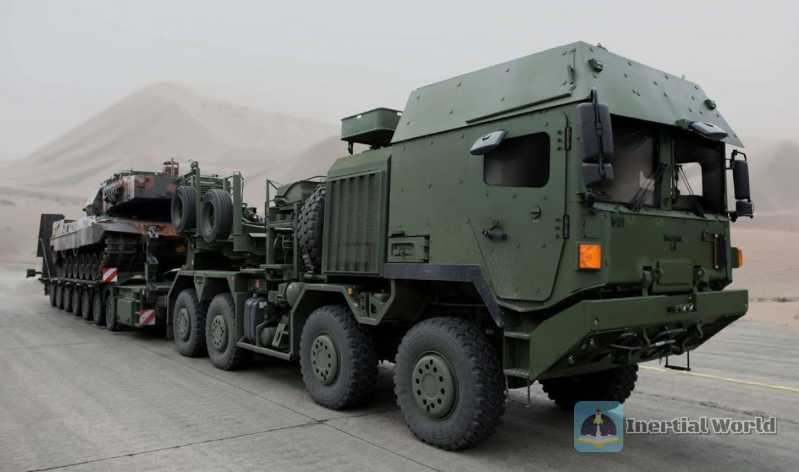
HX81 tractor can be equipped with a variety of interchangeable cabs, including what is known as the integrated armored cab option. This cab was originally developed by Rheinmetall and Krauss-Maffei Wegmann for the SX series trucks. Today, Rheinmetall has introduced its own integrated armored cab. The first batch of 19 HX81 tractors ordered by the German Bundeswehr were equipped with the original integrated armored cab. Australia and Norway have each selected Rheinmetall’s integrated armored cab for their HX81 tractors. In addition, all non-armored protective cabs installed on HX81 tractors are the latest version of the modular military cab developed by RMMV, which dates back to the Class 1 trucks that entered service in 1976. The modular military cab equipped with the HX series tactical truck is 29 cm longer than its predecessor and has a total load space of more than 600 liters in the rear (enough to accommodate radio equipment and full equipment for three crew members). For extended configuration, the cab can accommodate up to six people if required. Most of the instrument kit of the HX series tactical trucks comes from the commercial series instrumentation of MAN’s TG series trucks, as it is considered more practical and cost-effective than the dedicated instruments of the earlier cabs.
The removable hard cab roof can be equipped with optional air conditioning equipment, and if necessary, the overpressure cab can be equipped with a nuclear, biological and chemical (NBC) three-proof filtration system. The reinforced cab roof can not only withstand the weight of two soldiers, but also the recoil of the 12.7mm heavy machine gun on the rotatable gun mount. The vertical split explosion-proof windshield is standard, and the cab is also equipped with a riot kit. In addition, the Austrian company Ressenig and the German company Rheinmetall have also developed additional protection kits for this cab, which can be installed on the vehicle during the production stage. The basic specifications of these modular armored cab (MAC) additional protection kits weigh about 1,500 kg, and if necessary, the ballistic protection components (assemblies) of these kits can be technically installed on the HX81 tractor.
The 132 HX81 tractors ordered by the Bundeswehr in 2018 are being fitted with non-armoured protected cabs, very similar to the cabs fitted to the non-protected HX42M (6x6) and HX44M (8x8) series trucks, under a contract awarded to RMMV in July 2018. If required, the non-protected cabs of these HX81 tractors can be replaced with integrated armoured cabs.
Directly behind the HX81 tractor cab, the engine cooling system and intake/intercooler/exhaust are mounted on a tilting hydraulic load-bearing frame, which also houses some auxiliary equipment and up to two spare wheels/tires, as well as a crane: Directly behind the load-bearing frame can be fitted an APU-driven winch system, sufficient to tow a main battle tank. The HX81 tractor equipped by the German Army is equipped with two winches with a rated working pulling force of 20,000 kg and an armored protective cabin, and a winch for vehicle self-rescue.
As a NATO standard tactical truck, the HX81 tractor’s towing and rescue accessories are placed at the front and rear, including standard optional towing pins placed on the rear crossbeam of the frame. A steel front bumper is standard, as are various brackets installed on the chassis for storing sealed wading materials and devices. The design standard specifications of the electrical system (including tactical lighting and blackouts) can be further improved to install additional military electronic equipment and communication or command equipment.
The traction saddle (Fifth Wheel, also known as the "fifth wheel" refers to a device used to bear the front load of the semi-trailer, connect with the semi-trailer traction pin through a locking mechanism, transmit traction and braking force, and automatically connect the semi-trailer traction pin) developed by the German Jost Group is installed on the rear frame. When the HX81 tractor is equipped with 16.00R20 tires, an integrated armored cab, a double winch system and a spare tire, its rated load is 19,000 kg; if it is replaced with 24R21 tires, this rated load can be increased to 21,000 kg. The aluminum fuel tank (840 liters) is placed on the left side, between the front and rear axle pairs, and the maximum mileage can exceed 800 kilometers. The HX81 tractor can wade up to 0.75 meters without additional preparation of the chassis, cab and all auxiliary equipment (including all powertrain components), and all external compartments are waterproof (HX series trucks are designed to wade up to 1.5 meters deep)
Although its powertrain is composed of a variety of commercial components, it is a dedicated system for the HX81 tractor, and these components have been greatly improved and can be used for military heavy equipment transport vehicles. The tractor uses a V-type 8-cylinder, 16.16-liter D2868LF04 diesel engine developed and produced by MAN, which meets the Euro 5 emission standards. The D2868LF04 engine is a military model. It is not equipped with a front cooling fan, plastic engine cover, military software and "anti-wear kit", and can use low-grade military fuel for a long time; the maximum output power is 500 kW (680 hp) at 1900 rpm, and the maximum torque can reach 2700 Nm at 1000-1700 rpm; the torque transfer curve is optimized to match the TC-Tronic automatic transmission developed by German automotive parts supplier ZF, and is suitable for heavy equipment transport vehicles; the cooling system kit is also dedicated to the HX81 tractor, including a pair of parallel-mounted radiators (the same as the HX77 tactical truck). The initial HX81 tractor prototype is equipped with a variant D2868 engine that meets Euro III emission standards and has a maximum output power of 660 hp (492 kW).
The TTronic automatic constant mesh gearbox developed by automotive parts supplier ZF (called TipMatic transmission by MAN’s commercial product line) has 12 forward and two reverse gears, and is connected to its WSK440 torque converter (except Australia) and the G253 full-time all-wheel drive two-speed transfer case developed by MAN. The gear ratio of the gearbox allows the use of full engine torque at almost any speed; in addition, the reduction function provides 500 kW of wear-free downhill braking.
The power transmission of the HX81 tractor is achieved through a special single-tire wheel-side reduction axle (axle) developed by MAN. Initially, the first and second axles use VP/VPD-09 driven steering front axles, both with a rated load of 9,000 kg (each); the third and fourth axles use HPD-1372-E/HP1342-E single-tire double-linked two-stage reduction rear axles, both with a rated load of 13,000 kg (each). Later, the HX81 tractor adopted the 11,000 kg rated front axle and 16,000 kg rated rear axle of the HX44M series truck. The maximum rated load of the rear axle was reduced with the optional 16.00R20 tires. All front and rear axles are equipped with wheel differential locks that can be controlled by the driver; longitudinal control differential locks are also installed in the rear axle and transfer case.
All axles use dual-circuit pneumatic drum brakes. The electronic braking system (EBS) with anti-lock braking system (ABS) developed by MAN is standard and can be supplemented by a pneumatic exhaust brake with an additional exhaust valve brake system. The transmission retarder, engine brake and service brake are automatically controlled by the vehicle electronics, and heat exchangers dissipate waste heat into the cooling system.
The HX81 tractor is equipped with leaf springs on all axles. The front steering drive axle is a combination of parabolic leaf springs and progressive rubber boosters and shock absorbers, with a rated load of 10,000 kg per axle in standard configuration. The rear axle is supported by inverted multi-leaf trapezoidal springs with radius rods and anti-roll bars, with a rated load of 14,500 kg per axle in standard configuration.
Early HX81 tractors were equipped with 395/85R20 tires, which were later replaced by 16.00R20 tires, and other options included 14.00R20 and 24R21 tires. Snow chains are allowed for all tires less than/equal to 16.00R20, and semi-automatic or central tire inflation and deflation systems (CTIS) and run-flat plug-ins are optional.
Steering is achieved through the ZF8099 hydraulically driven steering gear developed by ZF automotive parts supplier. On trucks equipped with steering drive axles (rated load of 11,000 kg), each steering drive axle has steering drive function on both sides; the maximum steering angle of the front axle (first axle) is 36 degrees, and the maximum steering angle of the second axle is 18 degrees.
The HX81 tractor can be airlifted by A400M transport aircraft. The approach and departure angles of the tractor (without semi-trailer) are 41 degrees and 44 degrees respectively, the maximum climbing angle exceeds 60%, and it can climb 0.6-meter-high vertical steps and cross 2.3-meter-wide ditches; the wading depth can reach 0.75 meters without additional preparation.


